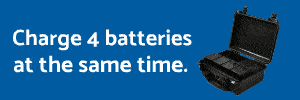Yeah it's not magnetic declination. That's a whole other ball of wax.
The mod values are just variances perceived by the sensors but the size of the compass mod value is dependent on locale/latitude.
It's not a huge deal except it's worth noting that "my" normal mod value and "your" normal mod value may be quite different depending on where you are on the globe.
What's important is for you to know what a "normal" range for your locale is and beware of calibrating your compass in an area where there are strong magnetic fields, large steel structures, etc.
This free iOS app is handy (in addition to the compass mod value) in helping detect whether you are standing in an area of strong magnetic fields:
Local Magnetic Field Check (optionally check before takeoff but ALWAYS before calibrating compass):
https://appsto.re/us/o9xCE
To use it, fire it up in an open area known to NOT have strong magnetic fields, ferrous material or large metal structures and note the general value range. Ignore the small constantly changing fluctuations. This is usually in the 30-50 range.
Next, go find a large metal object (ie the engine hood of your car), ferrous materials or a magnet and get near it. Note the new high value.
Before calibrating the compass, check to be sure the value is in the "low" range. If not, DO NOT calibrate there. Seek another open area for compass calibration. Doing so risks your aircraft and safety of people on the ground!
Before each flight, check the compass mod value to verify its within normal range AND optionally check the app as a sanity check. Higher than normal is fine for takeoff but app values near the high range should give you pause before flying in that location.
I have noticed that many a crash report these days begins with "I had just calibrated my compass....".
Understand that when you calibrate anything on your aircraft you are teaching it what's "normal". Doing that incorrectly (even a little) can have devastating results.
Kinda like raising kids.
But I digress....
Also be aware that the compass calibration procedure says to "rotate the aircraft" around ITS axis. It doesn't say to rotate YOURSELF around YOUR axis.
It's a small point but the manual, the in-app diagram, and many seasoned pilots agree that rotating the aircraft with IT at the center of axis is what is prescribed for best results.
Many a YouTube video, including at least one video by DJI themselves with a "demo dude" show rotating while calibrating. That's not what the manual says to do, for the record. It says to "rotate the aircraft" with a diagram showing the aircraft as the center of axis. It may not be a big deal or it might be a big deal I'm not really sure but it's worth noting. It also may be that some folks are not being careful while calibrating the compass and as they hold the aircraft out in front of them rotating around, the aircraft is passing over a metal object or magnetic field that is impacting the calibration unbeknownst to them.
Be careful when calibrating is the bottom line.







